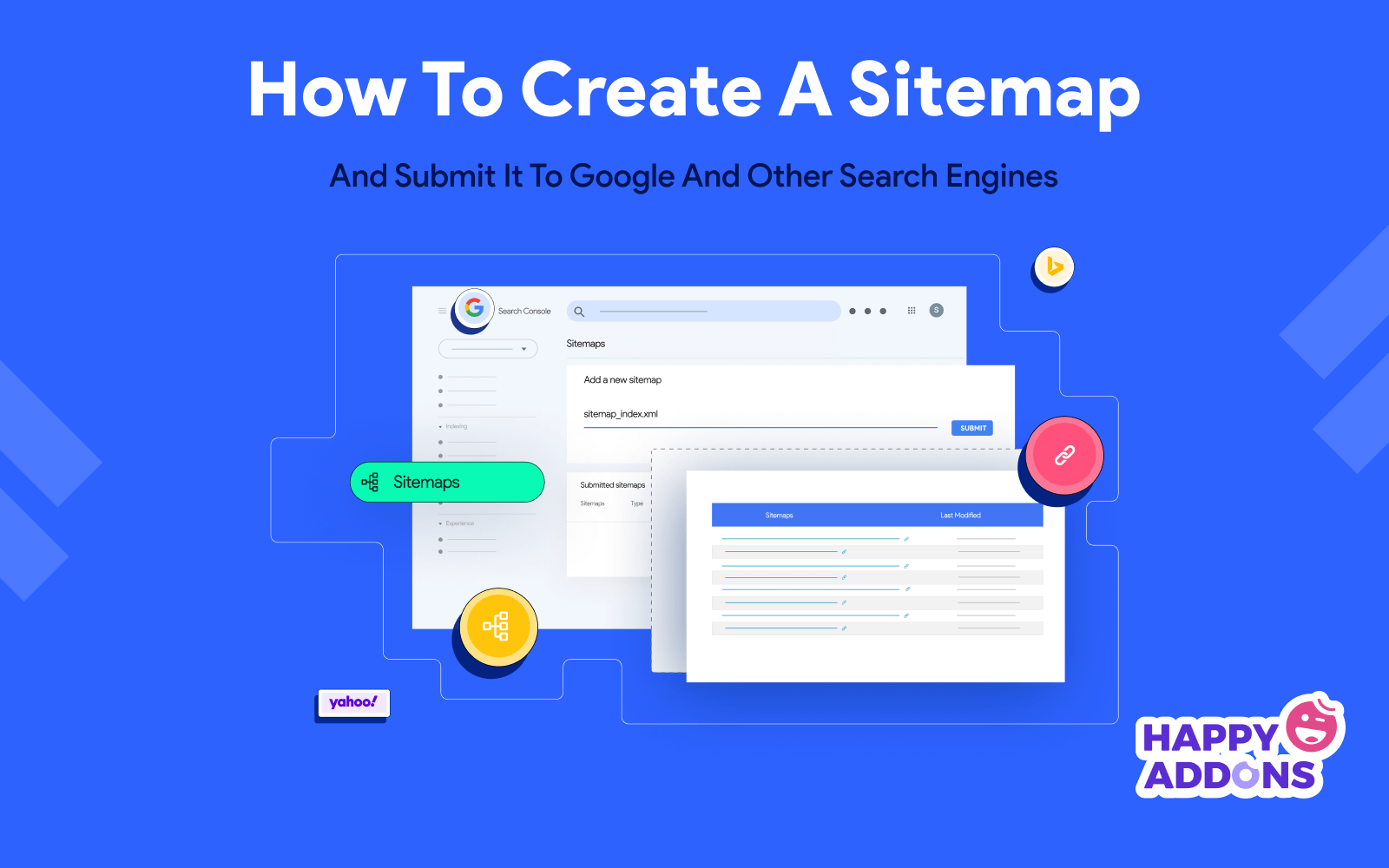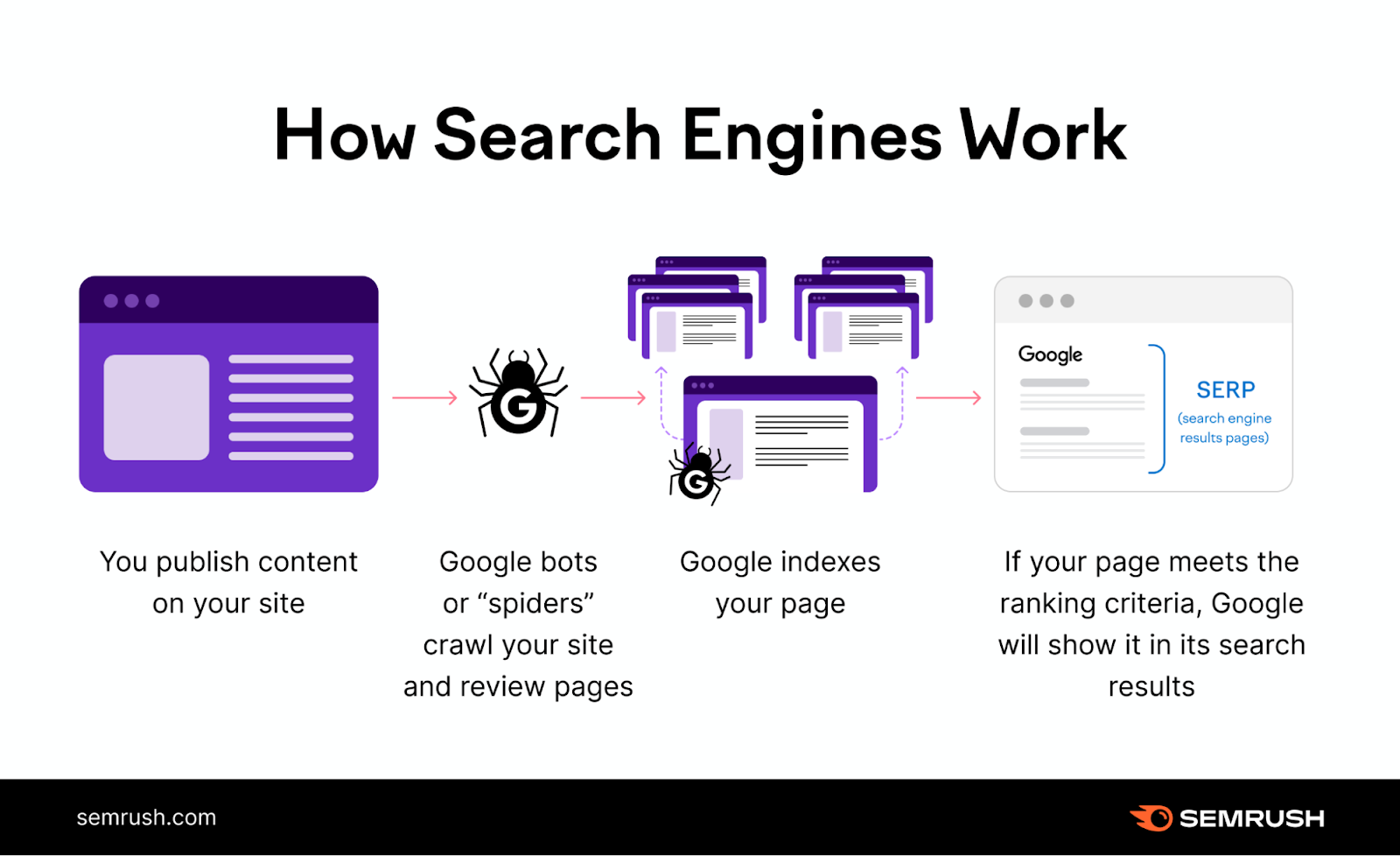Sitemaps play a crucial role in Google indexing by guiding search engines to crawl and index website content efficiently. They act as a roadmap for search engines, highlighting the structure and updates of a website.
Crafting a well-structured sitemap is essential for website owners aiming to enhance their online visibility. It ensures that Google can easily find and index all valuable pages, improving a site’s chances of ranking higher in search results. Sitemaps are particularly vital for new websites or those with pages that are not well-linked.
By submitting a sitemap to Google, website owners can directly inform the search engine about the existence of their pages, speeding up the indexing process. This straightforward approach not only boosts a site’s discoverability but also helps in organizing content in a manner that is user-friendly for both search engines and visitors. Ensuring your website has an updated sitemap is a step towards achieving better SEO results and enhancing user experience.

Credit: magefan.com
The Importance Of Sitemaps
Sitemaps serve as roadmaps for search engines. They guide Google through all the pages on a website. This makes sure every page gets noticed. Think of sitemaps like a table of contents. They list all the important parts of a site.
Connecting Pages For Search Engines
Sitemaps link various pages on a website. This helps search engines crawl them efficiently. Without sitemaps, some pages might stay hidden.
- Groups related pages
- Makes crawling easier
- Ensures no page is left behind
Improving Site Visibility
A well-crafted sitemap boosts a site’s visibility. It tells Google what’s on your site. This helps your content show up in searches. A good sitemap can mean more eyes on your pages.
- Helps Google understand your site
- Increases chances to rank better
- Drives more traffic
Credit: www.google.com
Types Of Sitemaps And Their Uses
Understanding the Types of Sitemaps and Their Uses is crucial. Sitemaps help Google find and index your website’s pages. Let’s explore the different types and their purposes.
Xml Vs Html Sitemaps
XML sitemaps are for search engines. They list all your website’s URLs. This makes it easy for Google to crawl and index your site. Think of it as a roadmap for Google.
HTML sitemaps, on the other hand, are for people. They help visitors find content on your site. It’s like a table of contents for your website.
- XML sitemaps can include metadata. This info tells Google when you last updated a page.
- HTML sitemaps improve site navigation. This helps visitors and boosts SEO by ensuring pages are found.
Video And Image Sitemaps
Video and image sitemaps are special. They tell Google about your site’s rich media content. This helps your images and videos show up in Google Search and Google Images.
| Type | Use |
|---|---|
| Video Sitemaps | Index video content for search engines. |
| Image Sitemaps | Help Google find and index your site’s images. |
Both types ensure your media appears in search results. This can drive more traffic to your site.
Creating An Effective Sitemap
Creating an Effective Sitemap is vital for any website. It guides Google through all your important pages. A well-structured sitemap can boost your site’s visibility. Let’s dive into how to make a sitemap that Google loves.
Tools To Generate Sitemaps
- XML-Sitemaps.com: A free online tool that creates sitemaps up to 500 pages.
- Screaming Frog: An SEO tool that crawls websites and generates sitemaps.
- Yoast SEO: A WordPress plugin that automatically generates sitemaps as your site evolves.
Best Practices For Sitemap Structure
Follow these tips for a sitemap that stands out:
- Keep it Updated: Refresh your sitemap with new content regularly.
- Include Essential URLs: Only list URLs that you want Google to index.
- Set Priority Levels: Prioritize your pages from most to least important.
- Use a Clean Format: Ensure your XML sitemap is free of errors and easy to read.
Submitting Your Sitemap To Google
Google needs to find your pages to show them in search results. A sitemap tells Google about your pages. It is like a map for your website. You need to give this map to Google. This is called submitting your sitemap.
Using Google Search Console
Google Search Console is a tool by Google. It helps you submit your sitemap. First, add your site to the console. Then, go to ‘Sitemaps’. Here, you can add the URL of your sitemap. Press ‘Submit’. Now, Google knows about your sitemap.
Monitoring Sitemap Status
After submitting, check if Google accepted your sitemap. Go back to ‘Sitemaps’ in the Search Console. You will see the status of your sitemap. Look for ‘Success’ or ‘Error’. If there is an error, fix it. Then, submit the sitemap again. Keep an eye on the status to make sure Google can read your sitemap.
Sitemaps And Site Architecture
Sitemaps and Site Architecture play a crucial role in how Google indexes websites. A well-organized sitemap ensures that Google’s bots can easily navigate and index all the important pages on your site. This section dives into how sitemaps assist in organizing content for better indexing and facilitate the updates and deletions of content.
Organizing Content For Indexing
A sitemap acts like a map for Google’s bots. It guides them through your site’s content, ensuring nothing gets missed. By clearly defining the structure of your site, a sitemap helps in:
- Improving crawl efficiency: Google can find pages faster.
- Highlighting important pages: You tell Google which pages matter most.
- Grouping related content: This makes your site more user-friendly.
Think of your sitemap as the table of contents for your website. It lists all your pages in a clear and organized way.
Facilitating Content Updates And Deletions
Updating your sitemap is key when you add or remove pages. This signals to Google that your site has changed. Here’s how a sitemap aids in content updates and deletions:
- Quick updates: Google notices changes faster, helping your new content get indexed quicker.
- Removing old content: When you delete pages from your sitemap, Google knows to remove them from its index.
- Keeping your site fresh: Regular updates to your sitemap reflect an active, up-to-date website.
By maintaining an accurate sitemap, you ensure Google always has the latest view of your site. This helps your content rank better and stay relevant.
Common Sitemap Errors And Fixes
Sitemaps serve as roadmaps for Google to crawl and index a website efficiently. Yet, errors within sitemaps can hinder this process. Identifying and fixing these errors is crucial for optimal website performance in search results.
Broken Urls And Redirects
Broken URLs lead to 404 errors and poor user experience. Redirects may cause crawl delays. Both impact SEO negatively.
- Check URLs regularly for validity.
- Update sitemaps to reflect current URLs.
- Fix or remove broken links.
- Ensure redirects are 301 if permanent.
Duplicate Content Issues
Duplicate content in sitemaps confuses search engines. It splits page authority and hurts rankings.
| Issue | Fix |
|---|---|
| URL Variations | Use canonical tags to specify preferred URL. |
| WWW vs. Non-WWW | Choose one format and redirect the other. |
| HTTP vs. HTTPS | Secure site with SSL; redirect to HTTPS. |
Regularly audit your sitemap for duplicate URLs. Update it to keep only the canonical versions.
Sitemaps For Large Websites
Sitemaps for Large Websites are crucial tools. They guide Google’s bots through countless pages. This ensures all important content gets noticed. Large sites like e-commerce platforms can have thousands of pages. A sitemap makes sure Google finds them all.
Managing Multiple Sitemaps
For large sites, one sitemap isn’t enough. Multiple sitemaps keep things organized. This helps Google bots crawl efficiently. Think of them as chapters in a book. Each chapter tells part of your site’s story. Together, they cover the whole site.
You can manage these sitemaps through a sitemap index file. This file lists all individual sitemaps. It’s like a table of contents for your website’s structure.
Index Sitemaps For Easier Navigation
Index sitemaps simplify navigation for search engines. They provide a hierarchy of information. This hierarchy guides Google to your site’s most important pages first.
Using an index sitemap is like giving Google a map. It highlights the main roads. It shows the paths to take for efficient exploration. Your website gets indexed faster and more thoroughly.
Measuring The Impact Of Sitemaps On Seo
Understanding the influence of sitemaps on SEO is crucial for website owners. Sitemaps act as roadmaps for search engines. They guide crawlers to the site’s important pages. This makes indexing more efficient. A well-constructed sitemap can enhance a website’s SEO performance. Let’s dive into how we can gauge the effectiveness of sitemaps.
Analyzing Search Engine Crawl Data
Search engine crawl data offers insights into a sitemap’s effectiveness. Webmasters use tools like Google Search Console to track this. They monitor how often Googlebot visits their site. They also look at which pages it crawls. This data helps identify the benefits of having a sitemap. It reveals the sitemap’s role in guiding search engines.
- Frequency of crawl visits
- Pages indexed after sitemap submission
- Time taken for new pages to appear in search results
Improvements In Search Rankings
Improved search rankings signal a sitemap’s positive impact. Sitemaps help search engines quickly find new content. This can lead to better visibility in search results. Websites often experience a rise in rankings for key pages after submitting sitemaps. This is especially true for large or complex sites.
| Before Sitemap Submission | After Sitemap Submission |
|---|---|
| Lower rankings for key pages | Higher rankings for key pages |
| Slow indexing of new content | Quicker indexing of new content |

Credit: happyaddons.com
Frequently Asked Questions
What Is A Sitemap In Seo Terms?
A sitemap is a file that lists all the pages of a website, aiding search engines like Google in discovering and indexing the site’s content. It acts as a roadmap for search engines to ensure all pages are found.
How Does A Sitemap Improve Indexing?
Sitemaps facilitate better crawling by search engines. By providing a clear structure of a website’s pages, sitemaps enable Google to locate and index content more efficiently, potentially improving a site’s visibility.
Can Sitemaps Affect Website Ranking?
Directly, sitemaps do not affect rankings. However, they help search engines index your site more thoroughly. This comprehensive indexing can indirectly influence rankings by ensuring all content is considered for search results.
What Types Of Sitemaps Exist?
There are primarily two types: XML and HTML sitemaps. XML sitemaps are designed for search engines, listing URLs for indexing, while HTML sitemaps are meant for user navigation on a website.
Conclusion
As we’ve explored, sitemaps play a pivotal role in Google’s indexing process. They guide search engines through your site’s structure, ensuring all pages are found and ranked appropriately. Remember, a well-crafted sitemap can significantly enhance your website’s visibility and SEO performance.
Keep it updated, and watch your site climb the search results ladder.






